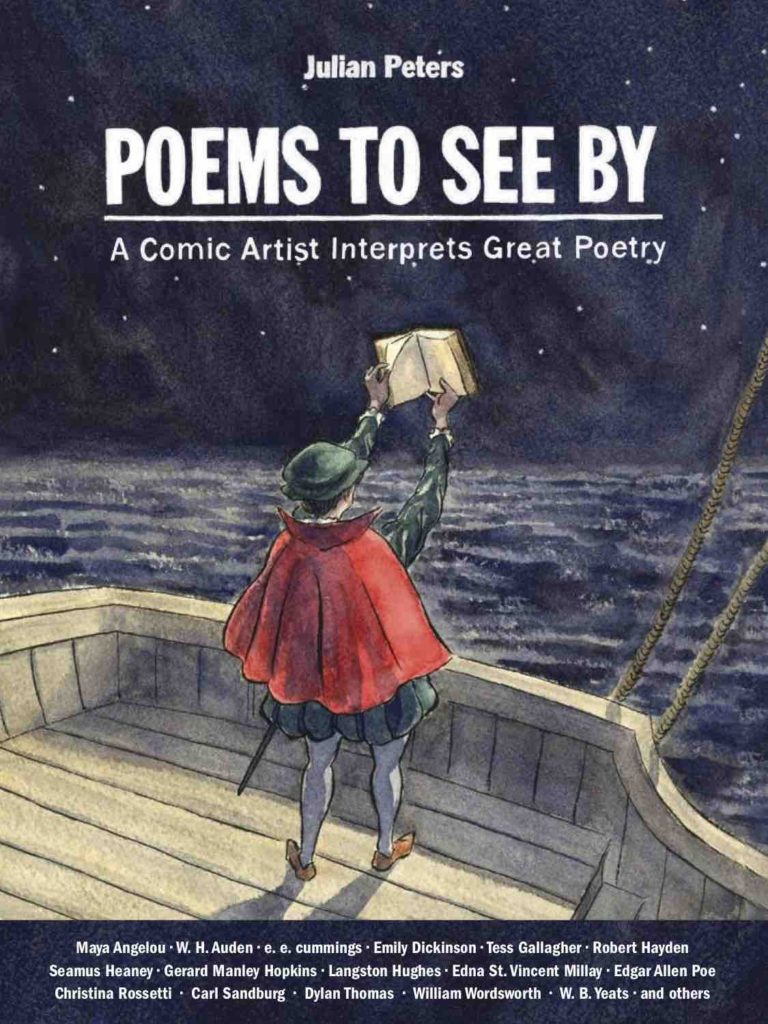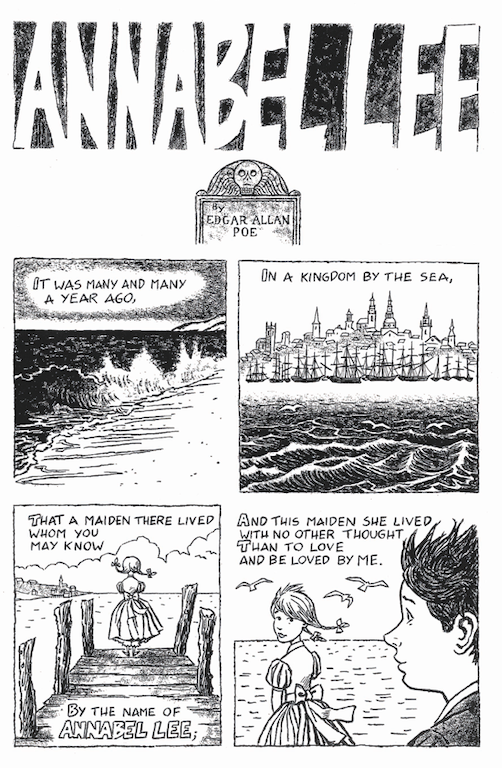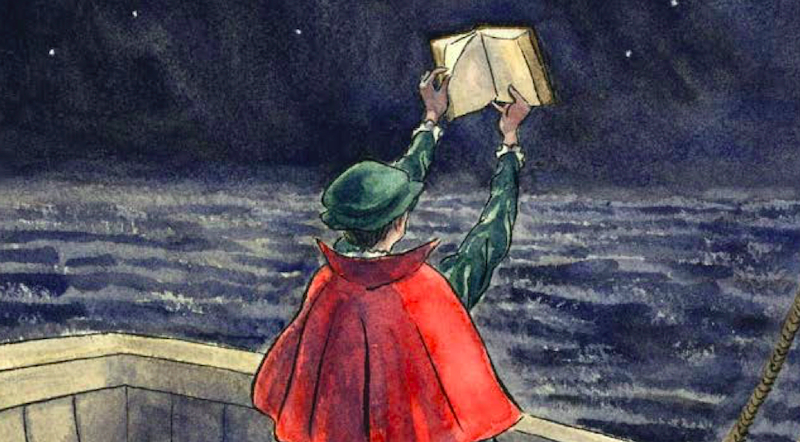INTERVIEW: Art meets poetry in ‘Poems to See By’
Photo: Image courtesy of Julian Peters / Provided by Superfan Promotions with permission.
And winner for one of the most creative ideas of 2020 has to go to artist and writer Julian Peters, whose new book is called Poems to See By: A Comic Artist Interprets Great Poetry. That subtitle says it all: Peters presents beloved poems by famous writers and displays them in a new form — with dazzling, intricate artwork.
The book, which is now available, is perfectly timed for National Poetry Month (and a bored-out-of-their-mind public at home for several weeks in quarantine). The Plough Publishing Press title gives the Peters treatment to 24 poems, including everything from Maya Angelou’s “Caged Bird” to W.B. Yeats’ “When You Are Old,” according to press notes.
Each of these 24 poems is given a unique style, which means readers have a chance to appreciate Peters’ diversity as an artist. He’ll jump from the world of W.H. Auden to the inspiring words of e.e. Cummings to the verses of Edna St. Vincent Millay to the gothic horror of Edgar Allan Poe. Other poets included: Robert Hayden, Tess Gallagher, William Wordsworth, Langston Hughes and Carl Sandburg, among others.
Recently Hollywood Soapbox exchanged emails with Peters about the new poetry project. Questions and answers have beens slightly edited for style.

How did you go about selecting the poets and poems for this new book?
The poems were selected in part with an eye to the typical reading lists of many middle school, high school and college literature courses, as well as to representing a wide diversity in terms of themes, styles and author identities. Above all else, however, the included poems were ones that myself and the editors agreed were very beautiful and moving in one way or another.
Did you stick to poems that have clear opportunities for visualization?
For the most part the poems were chosen before I gave any particular consideration to how they could be interpreted visually. The longer I have done these kinds of adaptations the more I have become convinced that, generally speaking, the best poems to illustrate are simply the best poems. Great poems have a lot of depth — whether emotional, imaginative and/or thematic — and thus have the greatest capacity to inspire ideas. I will say though that sometimes the best adaptations come from those poems that don’t immediately suggest any particular imagery because it forces me to push myself further and leads to new creative solutions.
How long have you loved poetry? Ever since you were a student?
As a high-school student I didn’t much care for poetry. At times I even actively resented it, in part, I think, because so much teaching emphasis was placed on deciphering the meaning of poems, which always seemed to me to be needlessly convoluted. It was only at the very end of my teen years, when I started college, that I suddenly began to really appreciate poetry. I think this may mostly be the result of hormonal changes, but it was also the case that I had a few teachers at that time who were really passionate about poetry and who encouraged us to feel a poem rather than just try to understand it.

Did you consult any other research or academia about the poets and the interpretation of these poems?
Prior to putting pencil to paper on a new adaptation, I always read up on the lives and careers of the poets I’m illustrating, as well a range of literary analyses of the poem in question. I want to make sure I’m aware of the principle ways in which the poem has been interpreted before I venture my own take. It’s not that I feel I have to stick to these established readings, but I would hate to somehow completely miss a certain widely-held interpretation of some or other aspect of the text. If I reject or ignore this reading, I want that to be an informed decision on my part.
Do you have a favorite poem?
It may well be ‘The Love Song of J. Alfred Prufrock’ by T. S. Eliot, one of the very first poems I illustrated. It’s such a perfect blending of the most startling imagery with a beautiful, sad musicality. But I might also consider ‘An Epitaph’ by Walter De La Mare, which encompasses vast expanses of time, space and emotion in a few brief, understated lines.
How difficult was it to move from one visual style to another for each poem?
Not as difficult as one might perhaps expect. I’m the kind of artist who is never entirely satisfied with his finished work, and over the years this dissatisfaction has spurred me to continually try out new styles and artistic media. Generally speaking, I tend to choose a stylistic approach based on the particular project at hand, rather than seeking out projects that I feel would suit a particular style. I was very grateful that the editors at Plough actually encouraged me to use as many different visual styles and media as possible because different poems tend to inspire very different artistic solutions to me.
By John Soltes / Publisher / John@HollywoodSoapbox.com
Poems to See By: A Comic Artist Interprets Great Poetry, by Julian Peters, is now available from Plough Publishing Press. Click here for more information.

